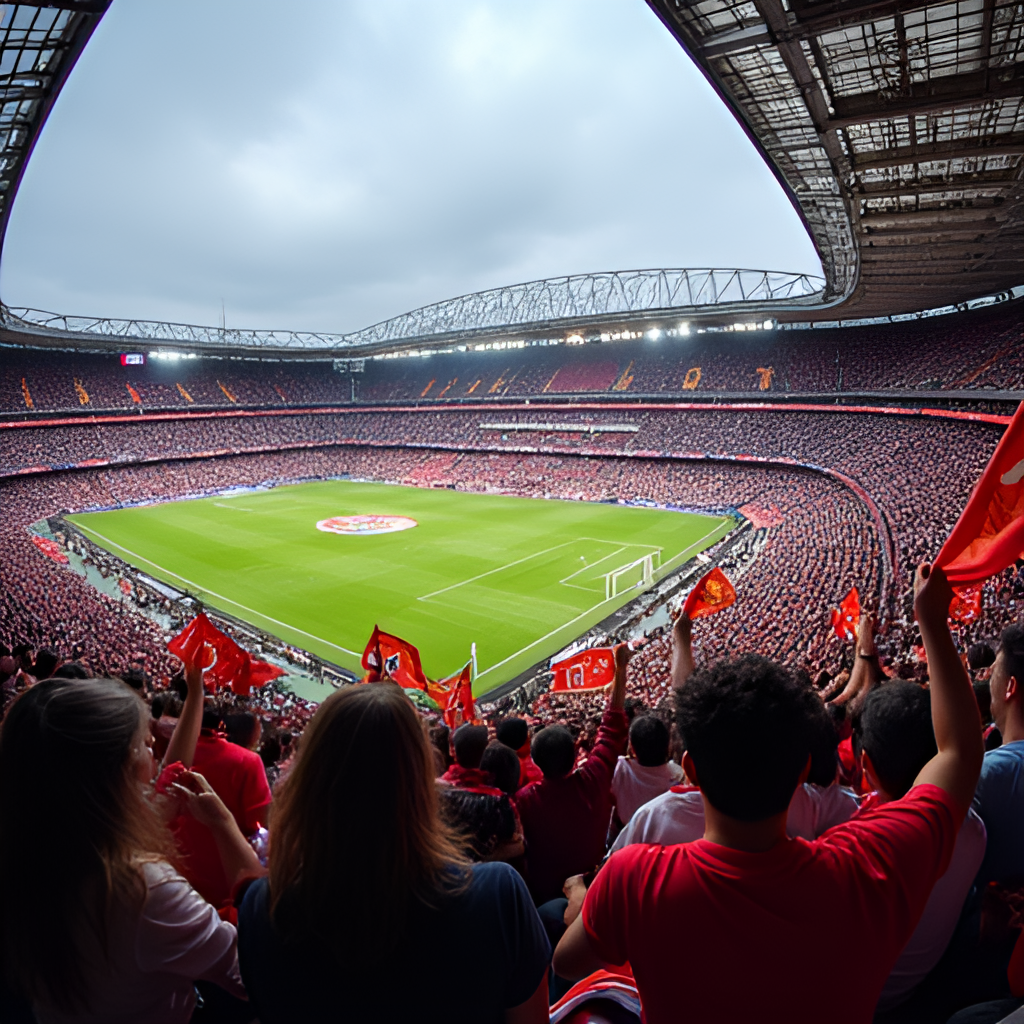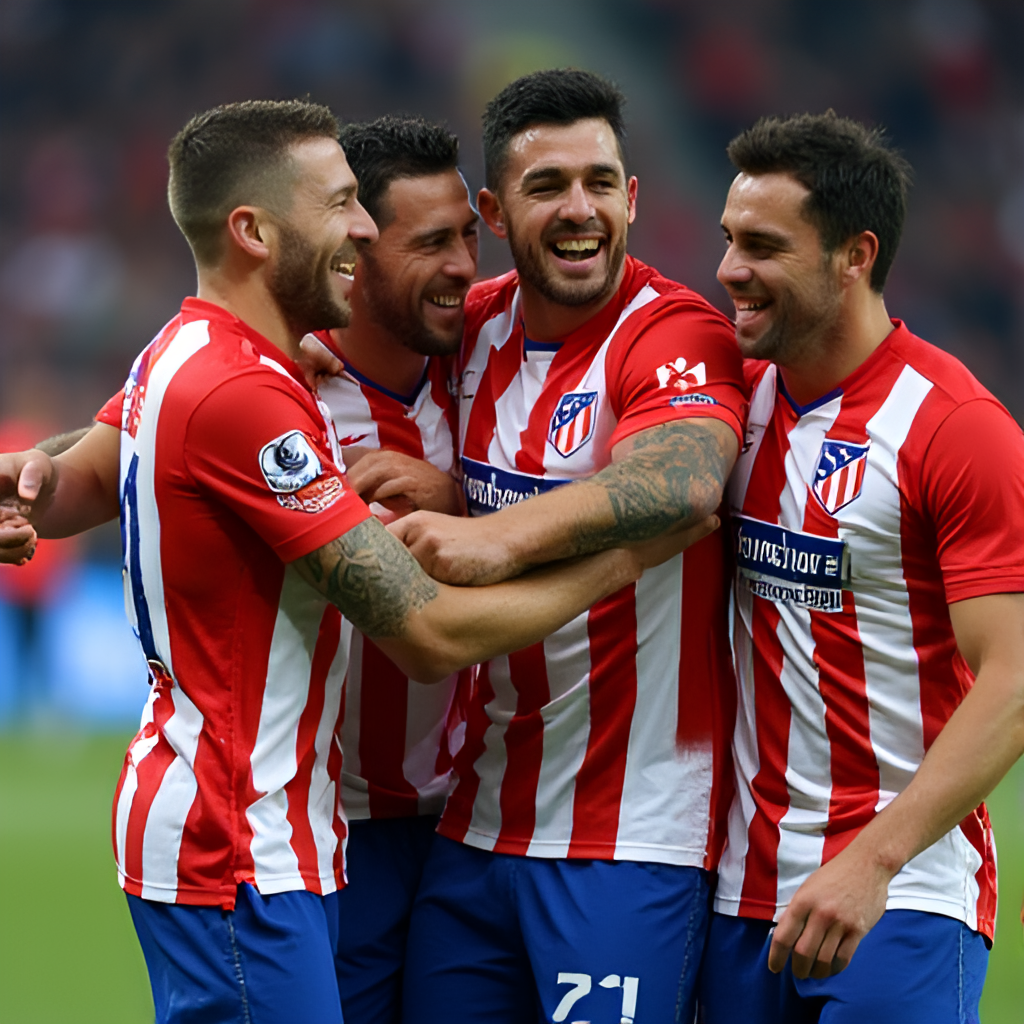Atletico Madrid: More Than Just a Football Club
- Introduction: Diving into the World of Atletico Madrid
- A Rich History: From Foundation to Glory
- Simeone’s Revolution: The Era of Cholismo
- The Metropolitano: A Modern Fortress
- Key Players and the Squad
- Rivalries and European Ambitions
- Transfer Market Dynamics
- Conclusion: The Enduring Spirit of Atletico Madrid
Atletico Madrid: More than just a football club, it’s a way of life for millions of passionate fans around the globe. From the moment I first saw them play, I was captivated by their grit, determination, and never-say-die attitude. This isn’t a club that always wins with flashy flair; they win with heart, hard work, and an unbreakable team spirit that truly sets them apart. Their story is one of resilience, rivalry, and remarkable success in the face of giants.
Founded in 1903, Atletico Madrid, or “Atleti” as they’re affectionately known, has carved out a formidable legacy in Spanish and European football. For anyone who appreciates a team that embodies fighting spirit, delving into the world of this iconic club is an absolute must. It’s a club deeply rooted in its community, with a history as colorful and dramatic as the red and white stripes they wear.
A Rich History: From Foundation to Glory
The journey of Atletico Madrid began on April 26, 1903, when three Basque students in Madrid founded Athletic Club Sucursal de Madrid, seeing it as a youth branch of Athletic Bilbao. Initially, they wore blue and white, influenced by Blackburn Rovers, but by 1910, they had adopted the now-famous red and white stripes, earning them the moniker “Los Rojiblancos” (The Red and Whites) or “Los Colchoneros” (The Mattress Makers) due to the stripes resembling old mattress covers.
Over the decades, Atletico Madrid established itself as a major force in Spanish football, often challenging the dominance of their illustrious neighbours, Real Madrid. They moved into their own stadium, the Estadio Metropolitano, in 1923, becoming independent of Athletic Bilbao in 1921. The post-Spanish Civil War era saw a brief merger with Aviación Nacional, leading to the name Atlético Aviación de Madrid and securing their first two La Liga titles in 1940 and 1941.
The club officially became Club Atlético de Madrid in 1947. The 1960s and 70s were particularly fruitful periods, with Atleti winning four La Liga titles and multiple Copa del Rey trophies. They also tasted European success, lifting the European Cup Winners’ Cup in 1962. The 1995-96 season stands out as a historic achievement, where Los Rojiblancos secured a memorable La Liga and Copa del Rey double under the management of Radomir Antić.
Simeone’s Revolution: The Era of Cholismo
Perhaps the most defining period in modern Atletico Madrid history is the era of Diego Simeone. Since taking charge in December 2011, the Argentine, affectionately known as ‘El Cholo,’ has transformed the club’s fortunes and identity. Simeone instilled a philosophy known as “Cholismo,” characterized by defensive solidity, tactical discipline, intense pressing, and a formidable counter-attacking threat. It’s a style that prioritizes the collective over individual brilliance, demanding immense effort and commitment from every player.
Under Simeone, Atletico Madrid has consistently defied expectations, competing toe-to-toe with financially superior rivals like Real Madrid and Barcelona. They won La Liga in the 2013-14 season, breaking the duopoly, and again in 2020-21. They have also achieved remarkable success in European competitions, winning the UEFA Europa League three times (2010, 2012, 2018) and reaching the UEFA Champions League final twice (2014, 2016). While the Champions League title has narrowly eluded them, their consistent presence at the top tier of European football under Simeone is a testament to his impact.
From a tactical perspective, Simeone’s Atleti is a masterclass in organization. While often employing a 4-4-2 formation, they are tactically flexible, sometimes shifting to a 4-3-3 or a 5-3-2 to adapt to opponents. Their defensive shape is incredibly compact, making them notoriously difficult to break down. My experience watching them play is that you can literally feel the intensity and structure they bring to the pitch; every player knows their role and executes it with unwavering discipline.

This image is a fictional image generated by GlobalTrendHub.
The Metropolitano: A Modern Fortress
Since 2017, Atletico Madrid’s home has been the state-of-the-art Cívitas Metropolitano stadium (formerly Wanda Metropolitano). This modern arena, with a capacity of over 70,000, replaced the historic Estadio Vicente Calderón and has quickly become a fortress for Los Colchoneros. Located in the north-east of Madrid, it’s one of the most modern stadiums in Europe and has hosted major events, including the 2019 UEFA Champions League final.
Visiting the Metropolitano is an experience in itself. The atmosphere generated by the passionate Atleti fanbase is electric. The stadium tour allows fans to go behind the scenes, walk onto the pitch, visit the dressing rooms, and explore the club’s interactive museum, which spans 1,400 square meters and chronicles their rich history. It’s a place where the club’s past and present converge, showcasing the values and achievements that define Atletico Madrid.
Key Players and the Squad
Over the years, Atletico Madrid has been home to numerous world-class players who have embodied the club’s fighting spirit. Legends like Luis Aragonés, Diego Forlán, Sergio Agüero, Radamel Falcao, and Antoine Griezmann have all left their mark. In the current squad, players like goalkeeper Jan Oblak, widely regarded as one of the best in the world, captain Koke, a product of the youth academy who holds the appearance record, and the ever-influential Antoine Griezmann continue to uphold the Atleti ethos.
Diego Simeone has a knack for developing and integrating players who fit his system perfectly. The squad is built on a foundation of defensive strength, combined with dynamic midfielders and clinical forwards capable of executing rapid transitions and counter-attacks. The team’s success isn’t just about individual talent; it’s about how they function as a cohesive unit, reflecting the manager’s philosophy.
Rivalries and European Ambitions
The rivalry between Atletico Madrid and Real Madrid, known as El Derbi Madrileño, is one of the most intense in world football. It’s a clash steeped in history, often seen as a battle between the perceived working-class support of Atleti and the institutional power of Real Madrid. Matches between the two are always fiercely contested affairs, filled with drama and passion.
Beyond the domestic rivalry, Atletico Madrid continues to harbor strong ambitions in European competition. While the UEFA Champions League has remained elusive, their consistent deep runs in the tournament demonstrate their capability to compete with the continent’s elite. Their three Europa League titles in recent years highlight their strength and resilience on the European stage. As a fan, I always look forward to European nights at the Metropolitano; the atmosphere is simply electric and pushes the team to perform at their best.
Transfer Market Dynamics
Historically, Atletico Madrid has often operated with a more constrained budget compared to their biggest rivals. This has meant being savvy in the transfer market, identifying and developing talent, and occasionally selling key players for significant fees to reinvest in the squad. This dynamic has become a part of the club’s identity, showcasing their ability to remain competitive despite financial disparities.
The club’s scouting network and coaching staff play a crucial role in this. They look for players who not only possess the technical ability but also the right mentality and work rate to fit into Simeone’s demanding system. While there’s always speculation around transfers, the focus remains on building a cohesive team unit rather than relying solely on big-name signings. You can often find the latest news and rumours on sites like Goal.com or Tribuna.com.

This image is a fictional image generated by GlobalTrendHub.
Conclusion: The Enduring Spirit of Atletico Madrid
Atletico Madrid is far more than just a collection of players and a stadium; it’s a symbol of resilience, hard work, and unwavering loyalty. From their humble beginnings to their current status as a European powerhouse, Los Rojiblancos have consistently embodied a fighting spirit that resonates with fans globally. The era of Diego Simeone has solidified this identity, building a team that is tactically astute, defensively sound, and always ready to battle for every ball.
Their rich history, passionate fanbase, modern stadium, and competitive presence in both domestic and European competitions ensure that Atletico Madrid will remain a fascinating and formidable force in football for years to come. It’s a club that proves success isn’t just bought; it’s earned through sweat, sacrifice, and a shared belief in the collective. The story of Atletico Madrid continues to be written, and for supporters, it’s a journey filled with pride, passion, and the enduring belief in their unique way of doing things. As someone who has followed their journey, I can honestly say that supporting Atleti is never dull; it’s a rollercoaster of emotions, but one you wouldn’t trade for anything.